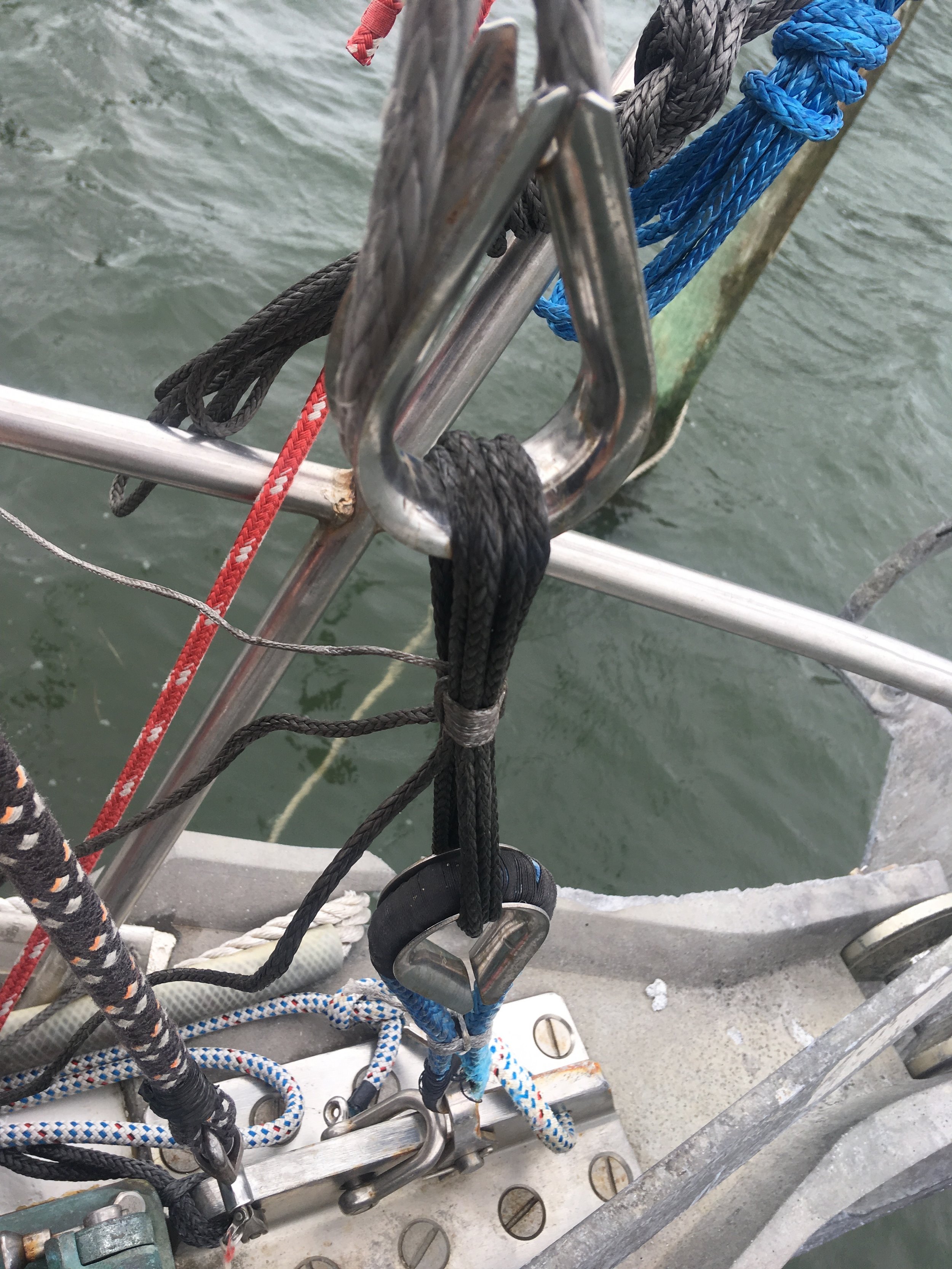When converting your standing rigging to systhentic, you might feel inclined to change "some of the stays now, and some of the stays later" as the budget allows. I strongly recommend against this, as combining steel and synthetic standing rigging can lead to more problems than solutions.
Yes, changing the stays one by one as time and money allows may seem fine from a theoretical standpoint, but they will not play well together.
As temperatures change, steel and aluminum will expand and contract at a similar rate, meaning that the steel stays will always remain around the same tightness. Synthetic standing rigging actually expands when it cools, making the stays just a bit longer than they were when initially setup. As the air heats up, they contract and get tighter.
If you setup your rigging at 80F, and then decide to go sailing on a day that is 60F, you will find that your mast will be out of tune! The steel stays will be tighter than your synthetic stays, making the whole system out of whack.
When I converted to synthetic standing rigging, I switched all the shrouds except for the check stays (that run aft from the height of the inner forestay). I didn't swap these stays out simply because I ran out of time before we were going on a long sailing trip. I figured that I would swap them out when we got back.
It seemed that I had to tune the rigging as the temperatures changed, especially the cap shrouds. As fall approached, the check stays (which attach about 3/4 of the way up the mast) remained the same tightness while the cap shrouds at the top of the mast were a bit looser. This meant that the mast would be in column and then bend sharply at the check stays. All I had to do was tighten the cap shrouds and this issue would resolve! The problem was this tight bend that was occurring at the check stay tang.
I was worried that if the temperature was cool enough and the shrouds loose enough, that the mast might bend far enough to buckle and cause serious damage to the spar! This kept me always adjusting and tuning the rigging for quite some time.
Eventually, I replaced the check stays with dyneema and all these problems disappeared! Now, all the shrouds expand and contract at the same rate, meaning that the mast will always remain in column.
On warmer days, the mast is obviously straighter as the rigging is tighter. This gives us the ability to point very well! On cooler days, the mast leans over slightly until the windward stays become tight and the leeward stays hang limp. The headstay also hangs a bit slack and our ability to point is degraded slightly.
While mixing steel and synthetic shrouds is not ideal, there seems to be no problem with having steel or synthetic headstays. Our setup is currently a synthetic headstay and backstay, with a steel inner forestay.
The reason the inner forestay was not replaced with the rest of the rigging is it is still new! The inner forestay was only 3 years old when I converted to synthetic standing rigging, and the cost of materials to swap out that additional stay just wasn't justifiable! When the inner forestay reaches 10 years old or starts to show signs of deterioration, it will then be replaced with a synthetic stay. Until then, it will remain.
On our setup, where we are a cutter rig with all synthetic standing rigging (except the inner forestay) the mast is able to remain in column and we are able to sail very well in all conditions! Having an adjustable backstay is a huge help for taking up some of the slack in the headstay on cooler days while trying to beat to windward.
Synthetic standing rigging is a wonderful and easy setup that you can create and install yourself. The weight savings will make your yacht less tender and the resistance to corrosion will give you peace of mind. If you decide to make the switch, make sure that you convert all your shrouds at the same time and not a few at a time to see how it works on your yacht.











